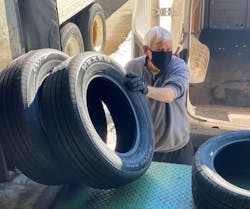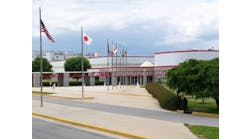Recent tire dealer commentary suggests that consumer demand for passenger and light truck tires rose on a net basis in October 2022 versus the same month in 2021.
Twenty percent of the net number of respondents to our latest survey indicated they saw positive demand year-over-year, which compares to lower readings the previous two months.
We note that this 20% figure represents the largest increase we have seen since March 2022.
We credit this to a bit of stabilization in terms of pricing actions from tire manufacturers relative to earlier in the year, which worked in favor of dealers during the month of October and November.
In addition, respondents to our survey indicated that they are seeing more promotional activity in the market – with many confirming that recent rebate actions have been a welcome sign from consumers.
While things are trending in a positive way again, some of our contacts anticipate another round of pricing actions at the beginning of 2023.
However, they do not believe that price hikes will continue at the pace they have.
Regional snapshot
Looking at volume levels during the month of October, we note that the Northwest region reported the strongest year-over-year growth, with the Midwest also seeing positive trends.
The Southwest experienced a slight year-over-year drop in volume. The Southeast region performed the weakest.
While dealers expect to see fewer price increases in 2023, they indicate that earlier price hikes have continued to impact demand.
That said, as mentioned earlier, recent rebates from tire manufacturers have lured more buyers into shops, aiding positive year-year-over volume.
Tiers jockey for position
Each month, we analyze how different tire tiers are trending in terms of customer preference – holding fast to our long-held belief that consumer preference changes according to economic conditions.
Tier-one and tier-two tires appeared to be the most in-demand products during October.
Despite inflation and other headwinds, tier-one and tier-two tires showed strength for the second month in a row.
We note that during the summer months, our contacts told us that more opening price point tires were entering the market and supply of those tires was increasing.
They also shared that many customers were still deferring auto repair and maintenance services due to the rising cost environment.
Our tire tier research indicated to us that this deferment period may be nearing the end and consumers are favoring higher-tier products as a result.
When examining the landscape from a longer-term view, we continue to believe that pricing in North America will remain consistent with raw material costs.
We expect tire manufacturers to remain disciplined in their efforts to balance price with volume in order to maximize profit over market share.
Manufacturers also continue to take a disciplined, lean approach to manufacturing output – though many tire dealers tell us they are experiencing increasing inventory levels.
Raw material reversal
The “basket” of raw materials needed to make a basic replacement consumer tire increased 26.1% on a year-over-year basis during the third quarter of 2022 following a 30.3% year-over-year jump in the second quarter.
Looking back a few months, we note that raw material cost increases tarted to moderate as our raw material index in August fell 3.8% from July levels.
For the most part, overall raw material prices remained flat from the second quarter of 2022 to the third quarter of 2022.
Looking ahead, holding current spot prices flat would equate to a 13.4% year-over-year increase this quarter in order to build a tire.
Looking at specific components, we note that carbon black has increased in price on a year-over-year basis for the last 21 months straight. However, rates have begun to moderate.
In assessing crude oil prices, we have seen some moderation on this front, as well, as prices have fallen a bit from their spring 2022 peak, which was driven by Russia’s invasion of Ukraine.
Sequential declines were observed in both August and September 2022.
Moving to natural rubber prices, our natural rubber index fell an average of 6.9% year-over-year during the last quarter.
The price of synthetic rubber, however, grew an average of 10.7% year-over-year during the third quarter of 2022.
Finally, price pressure on reinforcement items like cord and fabric climbed 43.3% on a year-over-year basis during the third quarter and showed no month-over-month declines.
We note that the price of reinforcement items increased by an average of 40.1% in the second quarter, year-over-year, and 36% year-over-year during the first quarter of 2022.




